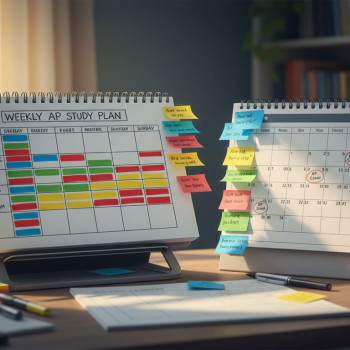AP vs SAT: Course Selection Synergy When to Do Both
Deciding how to spend your precious study hours in high school can feel like balancing on a tightrope AP classes, the Digital SAT, extracurriculars, and sleep (yes, sleep matters). If you re a student or a parent trying to map out a four-year plan that keeps doors open without burning out, this guide is for you. We ll walk through clear, practical choices: what APs and the Digital SAT test, how they complement each other, when it makes sense to do both, and how to create a study plan that s strategic, not frantic. Along the way, you ll see concrete examples, a comparison table, and ideas for scheduling with natural mentions of how Sparkl s personalized tutoring can fit into the mix.
Why compare AP and the Digital SAT?
Both AP (Advanced Placement) courses and the Digital SAT are widely used indicators of college readiness, but they measure different things. AP classes show sustained subject mastery across a semester or year; AP exams provide direct evidence of that mastery. The Digital SAT measures core college-ready skills reading, writing and language, and math in a timed, standardized setting. When colleges read applications, they look for both depth (subject mastery) and breadth (skills across disciplines). Understanding how the two interact helps you build a college application that s both persuasive and authentic.
A quick analogy
Think of your academic profile as a garden. AP courses are like carefully tended vegetable beds: focused, season-long work that yields specific, measurable produce (AP exam scores, potential college credit). The Digital SAT is like a soil quality test: a quick assessment that tells colleges whether your academic foundation will support future growth. Grow both well, and you get a garden that both looks good and actually feeds you.

What each option measures at a glance
Before we map the synergy, let s be sure we re comparing apples to apples.
- AP Courses and Exams: Subject-specific, college-level courses offered in high school (for example, AP Biology, AP U.S. History, AP Calculus). Exams typically ask students to demonstrate depth of knowledge, application of concepts, and, for many courses, analytical writing or data interpretation. Successful AP scores may earn college credit or placement.
- Digital SAT: A standardized exam that evaluates evidence-based reading, writing, and math skills in a digital format. It s a comparative measure colleges use to assess academic preparedness across applicants from many different schools and curricula.
How colleges use them (practical perspective)
Colleges look at APs and SAT scores differently and often together:
- APs show demonstrated interest and strength in specific subjects. A student who excels in several relevant APs (e.g., AP Calculus and AP Physics for an engineering applicant) signals readiness for that major s coursework.
- SAT scores provide a universal benchmark. They help admissions compare students coming from different grading scales, course rigor, and high schools.
- Together they tell a fuller story. Strong AP grades and AP scores suggest depth; strong SAT scores suggest broad readiness and test-taking stamina.
When you should consider doing both
There s no single right answer for every student, but some patterns can guide your decision. Consider doing both when one or more of the following apply:
- You re aiming for selective colleges: At highly selective institutions, showing both AP depth and strong SAT performance strengthens your academic narrative.
- Your school s grade inflation or deflation makes comparisons tough: If your school tends to grade generously or harshly, a solid SAT can help translate your performance for admissions officers.
- You re pursuing a subject-specific major: APs in relevant subjects (AP Biology for pre-med hopefuls) show you ve already started the journey.
- You want placement or credit: High AP scores can save time and money in college by placing you out of introductory courses.
- You have a mix of strengths and gaps: If your transcript shows deep knowledge in some subjects but weaker writing or math fundamentals, targeted SAT prep can close gaps.
When it might not be necessary to do both
Consider skipping one if:
- Your bandwidth is low: Juggling too many APs plus intensive SAT prep risks burnout and then none of the pieces shine.
- Your college list is test-optional and you re confident about AP performance: If your target schools don t require the SAT and you have strong APs, you may prioritize depth over another standardized attempt.
- Your interests are exploratory: If you re sampling lots of subjects and want breadth rather than AP depth early on, you might delay APs to later years.
Concrete timing and course-selection strategies
Here are practical roadmaps for common student profiles. Think of these as templates you can personalize.
Profile A The Future STEM Major
Goal: Build deep math and science preparation and strong standardized evidence.
- Junior year: Take AP Calculus (AB/BC) and AP Physics (1 or C if available). Begin Digital SAT prep in the spring; aim for one full practice test per week and targeted math review.
- Senior year: If you need placement, take the relevant AP exams; consider an SAT retake early fall if score improvement is likely. Use test results to decide whether to pursue AP credit in college.
- Why both: APs provide the subject depth for major readiness; SAT shows math and reasoning skills across a standardized benchmark.
Profile B The Humanities or Social Science Focus
Goal: Demonstrate strong reading, writing, and disciplinary thinking.
- Junior year: Enroll in AP English Language or AP Literature, plus AP U.S. History or AP World History depending on interests. Schedule Digital SAT for the spring and prioritize reading and evidence-based writing practice.
- Senior year: Consider additional APs aligned with intended major (AP Government, AP Psychology), and use senior fall for SAT retake if needed.
- Why both: APs show depth in textual analysis and critical thinking; SAT provides a consistent reading and writing benchmark for admissions.
Profile C The Balanced Student with Limited Bandwidth
Goal: Maximize GPA while demonstrating academic rigor without overextending.
- Choose 1 or 2 APs that align with strengths and interest. Focus on high grades and strong AP exam performance in those subjects.
- Take the Digital SAT once (junior spring) with targeted, efficient prep. If the score is solid, you may forego retakes and spend senior year on AP classes or extracurricular depth.
- Why both (or a light version of both): A single well-targeted SAT attempt plus a couple of strong APs can be more compelling than many things done halfway.
Study planning: How to make AP and SAT prep work together
Practical overlap exists and smart scheduling can reduce duplication of effort.
- Shared skills: Critical reading, timed writing, data interpretation, algebraic thinking practice these once and apply them across both.
- Use AP coursework as natural SAT prep: Close reading of passages in AP English or analyzing graphs in AP Biology sharpens the same mental muscles the SAT values.
- Build a calendar that respects rhythms: Use the school year for AP content mastery; reserve early spring junior year and early senior fall for concentrated SAT practice cycles.
Sample weekly study plan (junior year, busy schedule)
- Monday: AP class homework and review (90 minutes).
- Tuesday: Targeted SAT practice one reading section + review (60 minutes).
- Wednesday: AP lab or extended project work (90 minutes).
- Thursday: Math practice overlapping AP Calculus and SAT math fundamentals (60 90 minutes).
- Friday: Light review or rest (30 45 minutes phone off).
- Weekend: One full practice Digital SAT every 2 3 weeks, alternating with mock AP exam questions in targeted subjects.
Comparison table: AP vs Digital SAT (practical features)
| Feature | AP Courses / Exams | Digital SAT |
|---|---|---|
| What it measures | Depth of knowledge in a specific subject over a sustained course | Broad evidence-based reading, writing, and math skills in a timed format |
| When to take | During or at end of the course (usually spring exam) | Commonly junior spring or senior fall (timed, scheduled sessions) |
| College use | Placement, credit, and demonstration of subject readiness | Comparative benchmark for admissions across applicants |
| How it affects admission | Enhances subject profile; supports intended major | Helps normalize academic potential across diverse schools |
| Prep style | Coursework, labs, essays, projects, cumulative study | Targeted, timed practice focusing on strategy and content review |
| Best when… | You want credit, placement, or to show major-specific readiness | You need a universal academic benchmark or to strengthen weak fundamentals |
Real-world examples how students combine the two
Here are short, realistic stories that show how APs and the Digital SAT can work together in practice.
Example 1 Maya: The Aspiring Neuroscientist
Maya took AP Biology and AP Chemistry, earning top grades and a 5 on the AP Biology exam. She studied for the Digital SAT in the spring of junior year because she wanted to demonstrate strong math reasoning and reading comprehension. Her APs showed subject depth for neuroscience; her SAT scores reinforced her overall academic readiness. Together these helped her get into a competitive undergraduate neuroscience program and allowed her to place out of an introductory biology course.
Example 2 Jamal: The Creative Writer
Jamal loved literature and took AP English Literature and AP U.S. History. He delayed the SAT until senior fall to avoid overloading junior year. With a focused practice regimen and a few full-length practice tests, he achieved a score that sat comfortably alongside his strong AP exams and high GPA. For him, APs demonstrated subject specificity; the SAT added the final piece to show consistent reading and writing performance under timed conditions.
Example 3 Priya: The Balanced Planner
Priya chose two APs AP Calculus and AP Psychology while keeping her schedule manageable. She took the Digital SAT once in junior spring and focused most of her energy on doing extremely well in her two AP classes. Her strategy worked: admissions officers saw both deliberate rigor and strong standardized proof. She later used one AP score to place out of an introductory psychology course.
Where personalized tutoring can plug into this plan
Whether you pick both paths or focus on one, targeted support can make the difference between busywork and meaningful progress. That s where personalized tutoring like Sparkl s approach becomes invaluable. A few ways tailored help fits naturally into your plan:
- 1-on-1 guidance: Tutors can help you prioritize which APs align with your college goals and strengths, designing a course load that s ambitious but sustainable.
- Tailored study plans: Tutors create realistic calendars that weave AP content review with Digital SAT practice, so your work compounds instead of competing.
- Expert tutors: Subject experts provide targeted review for AP exam question types while SAT specialists refine timing, strategy, and digital interface familiarity.
- AI-driven insights: Smart practice diagnostics can identify the exact question types or content gaps to focus on, making study time more efficient.
Used well, tutoring shifts limited study hours from cover everything to improve what matters most.
Common pitfalls and how to avoid them
Students often make the same mistakes when combining AP and SAT preparation. Here are the big ones and how to avoid them.
- Pitfall: Overloading on APs while ignoring weaker fundamentals. If your math foundations are shaky, an extra AP in the subject won t fix the underlying gaps targeted SAT-style review might.
- Avoid it by: Getting a diagnostic early (practice SAT section, cold AP question set) to identify gaps and then building a focused plan.
- Pitfall: Treating the SAT as an afterthought. A single rushed SAT attempt rarely produces the best score if you need the test for admissions.
- Avoid it by: Scheduling one focused prep cycle (8 12 weeks) at a time when academics allow consistent practice.
- Pitfall: Doing many APs superficially. College admissions prefer meaningful rigor; it s better to ace a few APs relevant to your intended major than to take many and get middling results.
- Avoid it by: Choosing APs that both interest you and align with future plans, and using tutors or study groups to maintain depth.
Checklist: A semester-by-semester action plan
Use this checklist as a practical roadmap from sophomore year through senior year.
- Sophomore Year:
- Explore AP options and take one introductory AP if available.
- Build strong foundational skills in math and reading (no shortcuts).
- Junior Year:
- Take your core AP classes aligned with intended majors.
- Schedule a Digital SAT diagnostic in late spring. If scores suggest room for improvement, plan an 8 12 week prep cycle.
- Consider 1-on-1 tutoring for targeted weak spots or to optimize test strategies.
- Senior Year:
- If needed, take the Digital SAT in early fall or a retake if you can improve scores without disrupting senior commitments.
- Finalize AP exam prep in the spring of senior year for any late or additional APs you took.
Final thoughts: Make a plan that fits your life
AP courses and the Digital SAT are powerful tools in a student s toolbox but they are tools, not goals in themselves. The most successful strategies are not about maxing out on tests or AP titles; they are about coherence. Choose APs that align with your passions and potential majors. Treat the Digital SAT as the universal evidence of academic readiness it is, and plan your prep in realistic, focused cycles that respect your schoolwork and mental health.
When you combine targeted AP coursework with thoughtful SAT preparation, you get the best of both worlds: specific subject depth and a reliable, comparable measure of your academic skills. If you find yourself unsure where to begin or how to balance the two, tailored help such as Sparkl s personalized tutoring with 1-on-1 guidance, tailored study plans, and expert tutors can give structure and efficiency to your effort without turning your life into a test-prep treadmill.
Closing encouragement
This is a marathon, not a sprint. Small, steady wins add up: a consistent weekly study habit, choosing a few APs that matter to you, and approaching the Digital SAT with a clear plan. Do that, and you ll show colleges not just what you know, but how thoughtfully you plan your own growth and that s the kind of student anyone wants in their incoming class.




















No Comments
Leave a comment Cancel